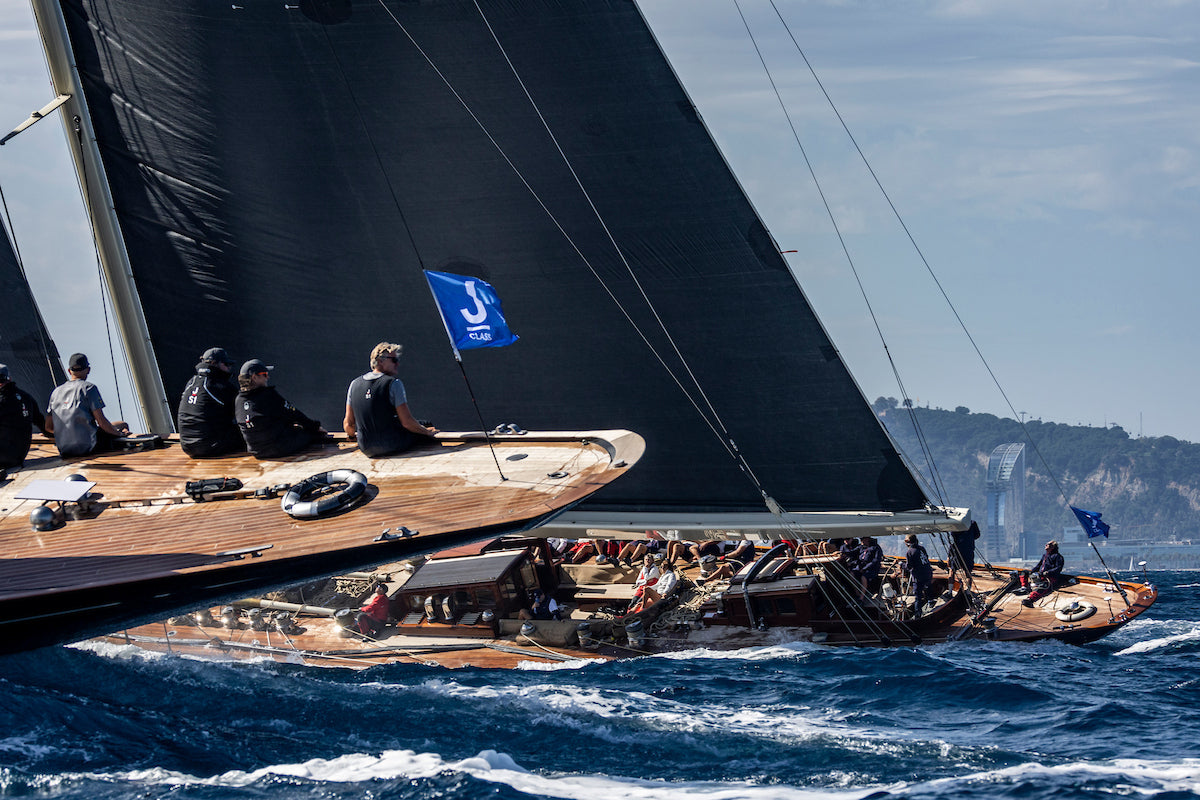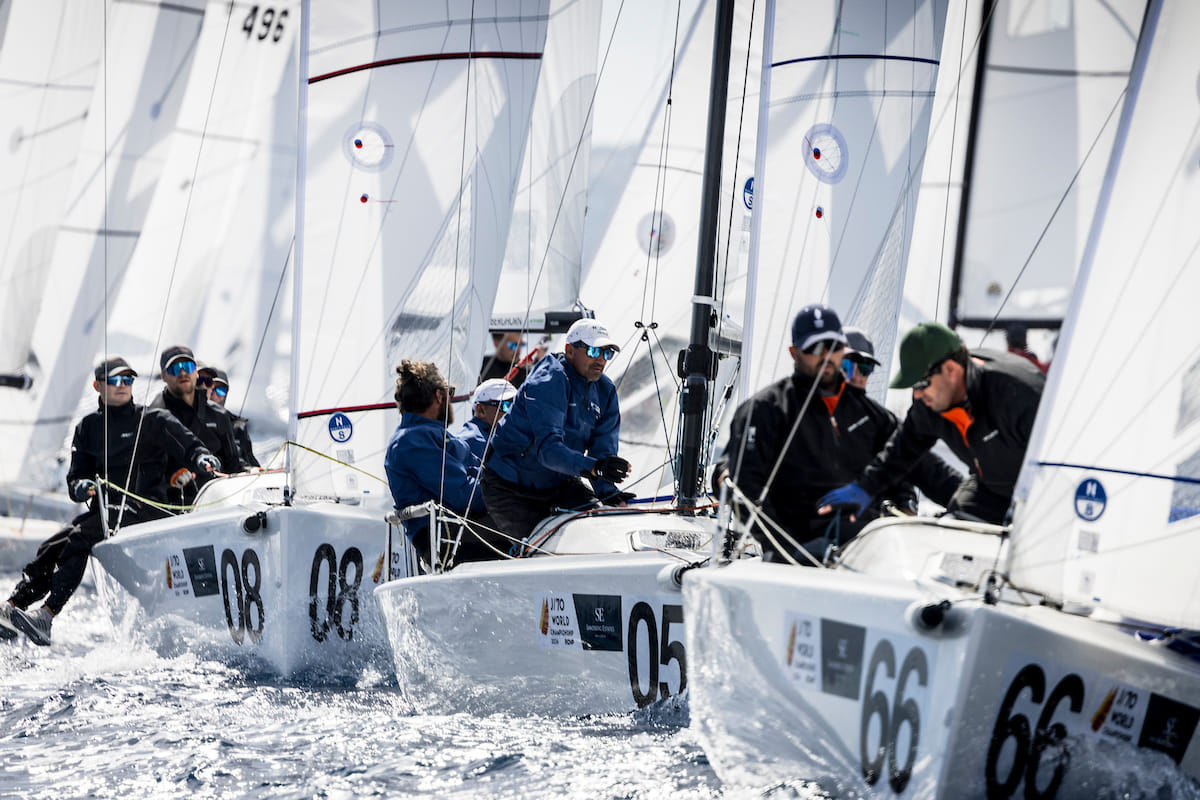HOW TO DOMINATE THE VX ONE NORTH AMERICANS
HOW TO DOMINATE THE VX ONE NORTH AMERICANS
Here’s The Recipe From The Winners

36 VX Ones gathered in Newport, Rhode Island from September 19-22 to race in the 2019 North American Championship. Class expert and designer Mike Marshall, sailing with North Sails design expert Madeline Gill and Jo Ann Fisher, dominated over the largest fleet in class history, with only one finish out of the top three. Newport breezes were shy for the first two days, and it wasn’t until Sunday’s seabreeze filled that the team was able to fully showcase the versatility of the North Sails inventory. North-powered teams finished 1,2,3,5,6,7,8,9,10.
Mike Marshall commented after the event:
“North Sails offers the fastest VX One sails on the market. The main allows for a wide range of rig tuning. You are able to ease the lower shrouds in light air to get headstay sag, but also tighten them in the bigger breeze to get headstay tension. The jib pairs well with the main, allowing for tight in-hauling and hard sheeting. The AP spinnaker is perfect for all the different modes, from slightly more bow down, almost planing mode in light air, to the much higher planing mode in medium and heavy air.”
Here’s their recipe for their success:
Conservative Plan
Madeline Gill had never sailed with Mike before, but as the team trimmer she says that consistency was the biggest factor in their success. “We formed a conservative plan and stuck to it – arrive early to the venue, launch the boat as soon as everything has been checked over, and get off the dock before as many other boats as possible. We quickly settled into a reliable routine that allowed us to focus fully on our individual responsibilities and quickly bounce back from most mistakes.”
Conservative Setup
Before each race, Madeline explains, the team would sail upwind to get a visual on the power in the sails. “We would then make minor adjustments to the rig tune to have adequate power in the lightest breeze we expected, without sacrificing too much depowering ability. We rarely adjusted any shroud more than one turn between races. Even when things weren’t going our way and we were not sailing well, we resisted making large scale or multiple changes.”

Build Before You Burn
Mike adds that the key to speed in the VX One is to “match the speed of the boats around you before you match the angle. The chord of the keel and rudder are short; in order for them to work efficiently, the boat has to be going fast. If you ever felt like you were not pointing with the boats around you, it was probably because you weren’t moving fast enough forward. As the boat speed increases, the boat slides sideways less so it feels like you are pointing higher than the boats around you. For most of the event, I think that we kept the driving telltales of the jib with the windward one at 45 degrees lifted and the leeward one straight. If we were a little low on point, but faster than the boats around us, I would trim the main harder. If were were still low, I would potentially trim the jib a little harder, but not to the point where the top leech telltale was stalling.”
Flat Is Fast
Another part of making sure that the boat is going fast is to be able to get the bow down; Mike points out that can only happen with the boat flat, upwind and downwind. “In most conditions, I was looking to sail the boat with 8 degrees of leeward heel upwind and slightly more than that downwind. Only half of the hull is in the water, but it’s still a nice planing hull shape. Any more heel and the leeward corner is digging in, loading the rudder. Any less heel and the wetted surface is causing extra drag. When I was overpowered, I absolutely had to ease the mainsheet—in the biggest breeze, as much as two feet. Lighter teams might have to ease it a bit more, while heavier ones will have to ease it less.”
HIKE!
“I really couldn’t say it enough times all weekend!” Mike laughs. “The harder we hiked, the less I had to ease the mainsheet to get the boat flat. I’m quite sure that my team was tired of hearing me say “big hike here,” but it really is a difference-maker and in looking at the event photos, we were one of the hardest-hiking teams.”

Tuning
Forward crew Jo Ann Fisher says that tuning was a constant discussion on the boat. “Between every race, we would go upwind and check the rig. We were looking for the leeward upper shroud to be just going slack. If it wasn’t, we would put turns on the uppers. Once that was done, we would look for overbend wrinkles coming from the spreaders toward the clew, about halfway back in the sail. Any farther back, and we would tighten the diagonals until it went away. Any farther forward, we would loosen the diagnonals. Then we’d move our eyes down the sail, looking for overbend wrinkles from the gnav attachment to the clew. To reduce them, we would put a turn on the checks. From the lightest air to the windiest, we only adjusted the checks three turns. As with all tuning, the key is to be sailing upwind in race mode before you check: jib trimmed, vang on (if needed), and crew hiking hard.”
Weight Placement
Another topic Jo Ann mentioned was fore-aft weight placement. “Upwind in light air, we were trying to get as far forward as possible. If you could hear bubbles come out from behind the boat, you were too far back; if you took two or three waves over the bow, you were too far forward. Downwind too, we pressed as far forward as possible in light air. Mike was to windward sitting on the floor, Madeline was a little more to leeward, and I was sitting out leeward.”
In bigger breeze, Jo Ann says the team moved a half body width back from the shrouds upwind. “Downwind, we moved to all sitting on the weather side and then to all hiking a body width back from the shouds. Again, the goal was to not hear any bubbles from behind the boat. When you are planing, it is more about keeping the bow out, but unless the wide part of the boat near the mast is digging in, you don’t need to move any further back.”
Communication
Finally, Jo Ann points out that the team’s communication was crystal clear, well in advance of each maneuver. “At five minutes to the start, we knew where we’d start and what we were going to do upwind. 10-15 boat lengths before the windward mark, we knew what boats we would be ducking and whether we would be setting the kite at the offset (or before) and going straight, or looking to jibe. Three quarters of the way down the run, we knew which gate we’d round and which way we wanted to go upwind. It was not a lot of words, but everyone was prepared. Some of the biggest opportunities to pass boats is at marks, so knowing what the plan is long before you get to them is critical to having a good rounding.”
For more information about VX One North Sails products or to talk with your local expert, visit the VX One class page.




























